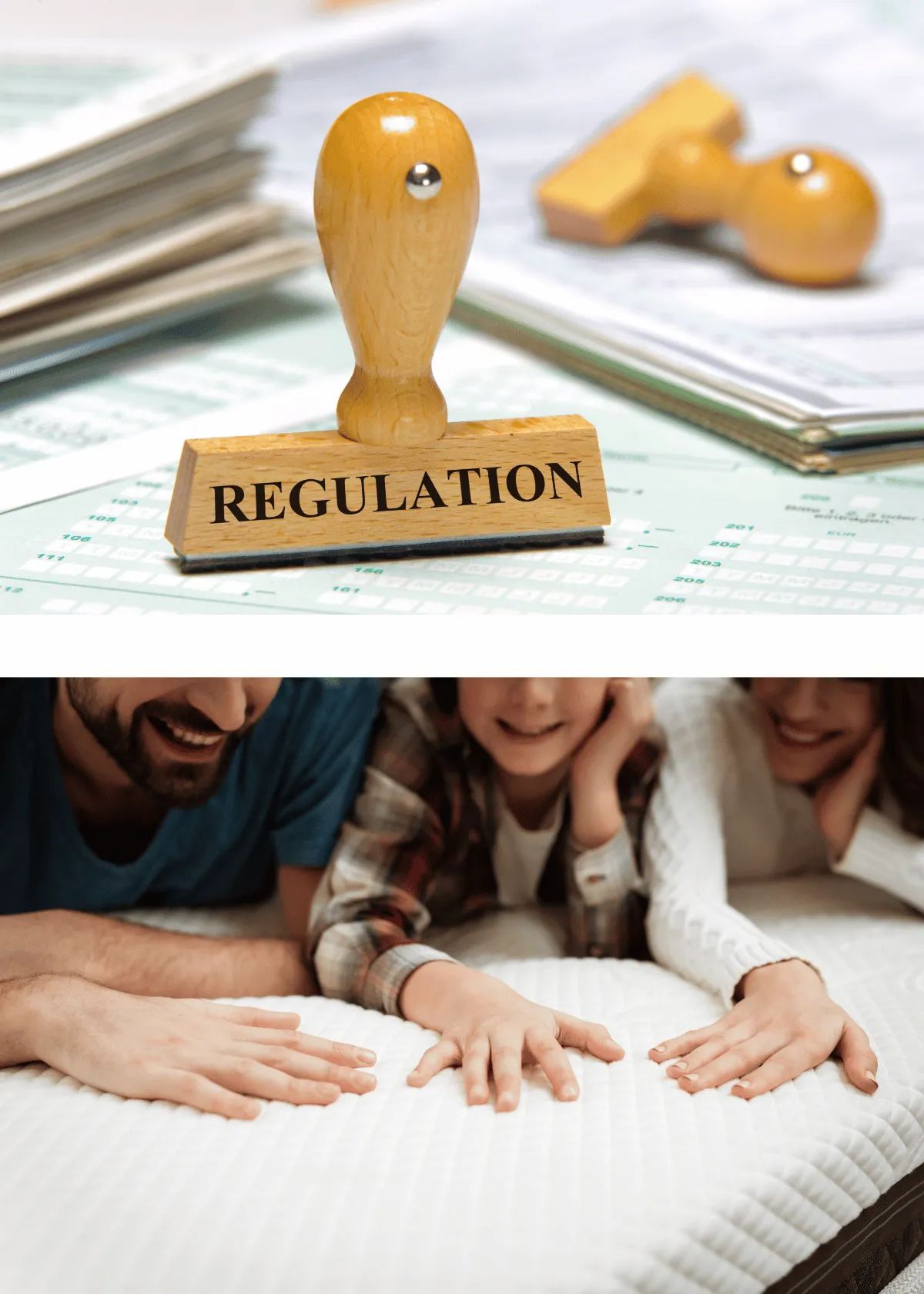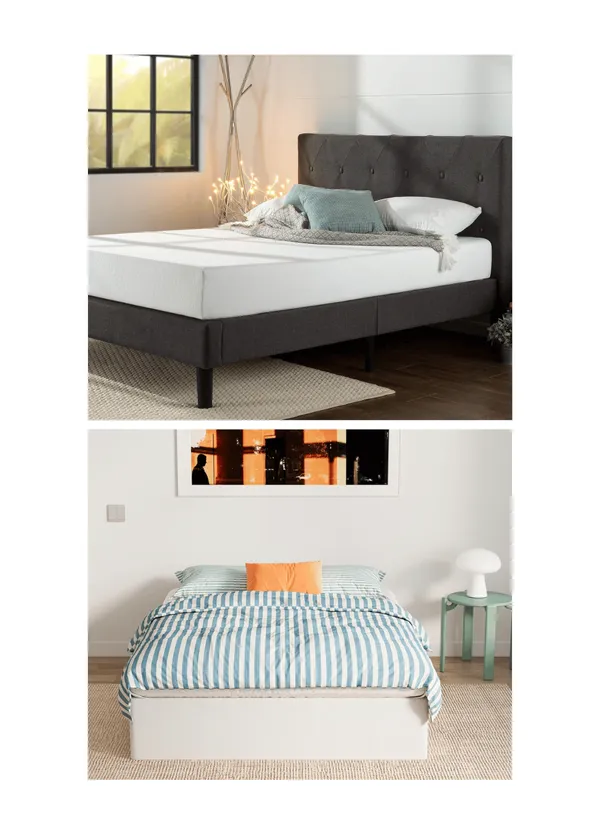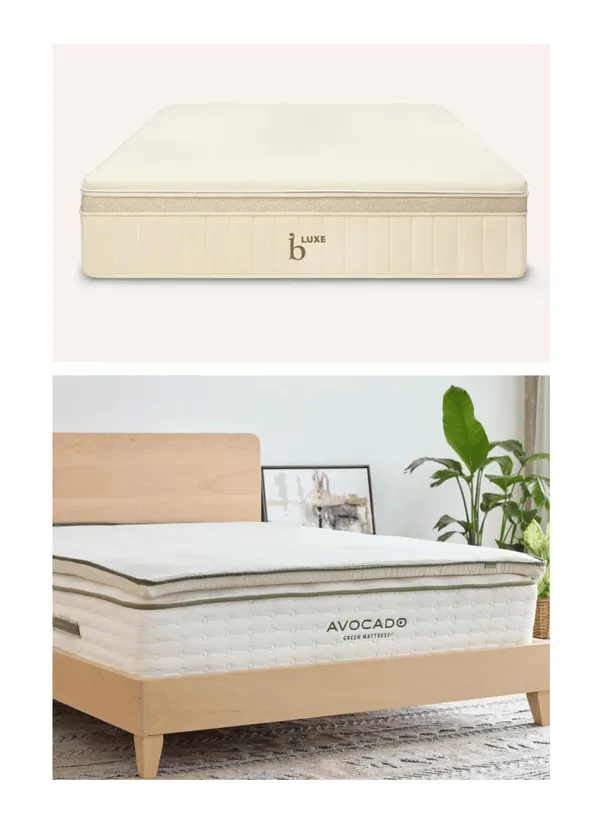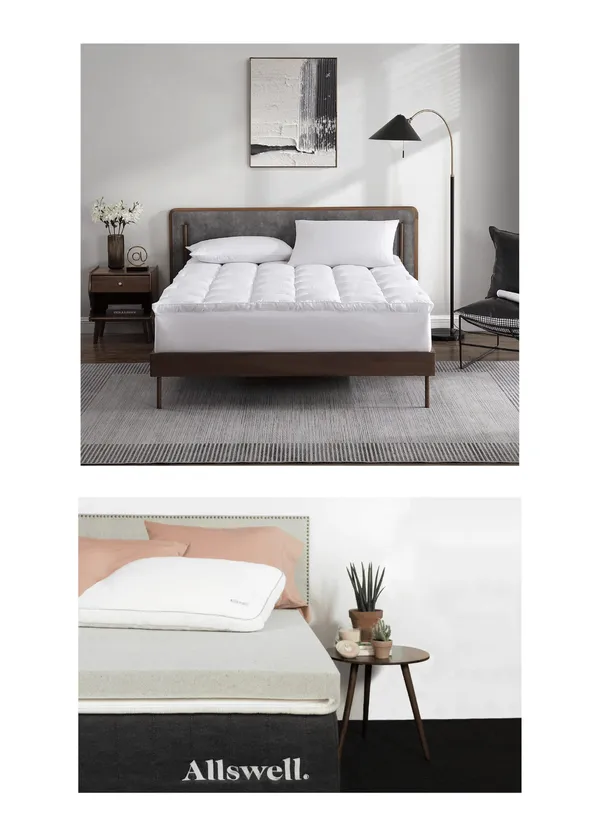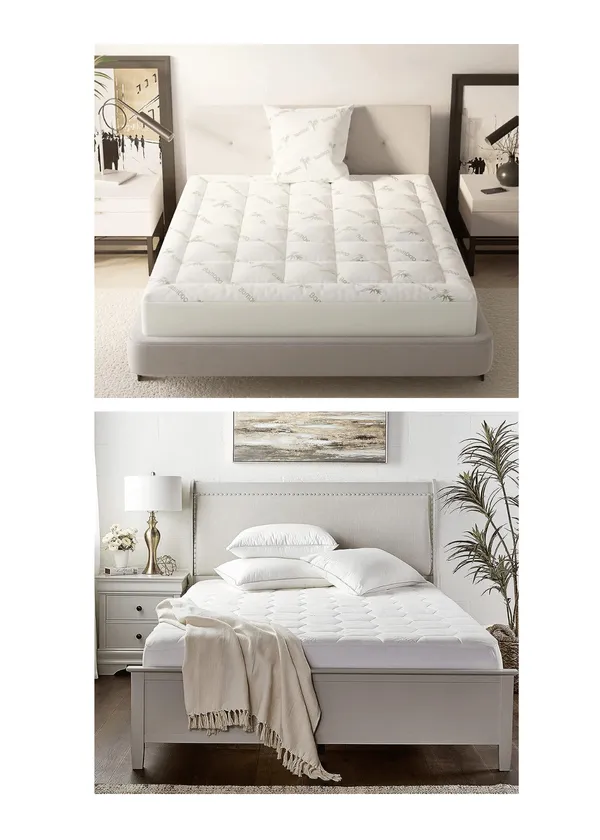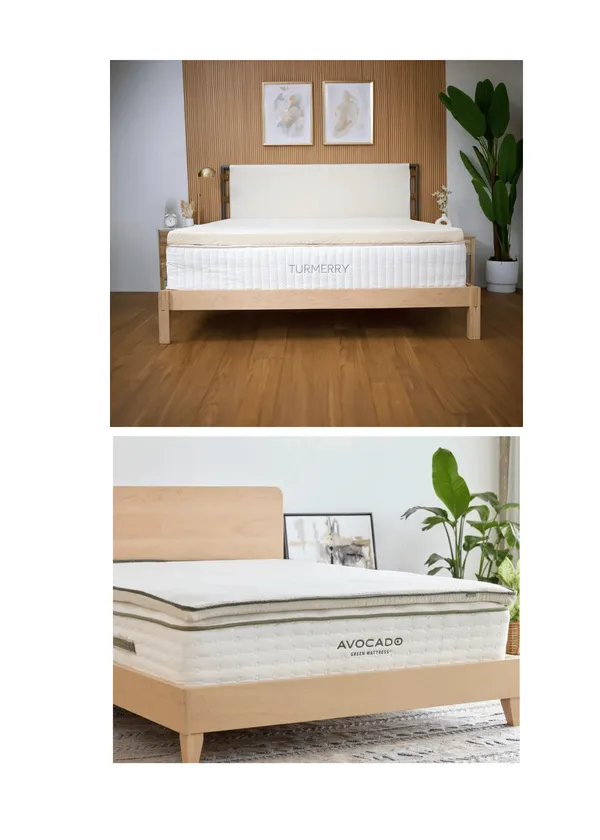(Last Update: 05/09/2024)
This content is created with integrity and impartiality; we do not receive direct compensation for this review. See our Mission and Core Values here.
KEY TAKEAWAYS:
- The US mattress industry is subject to regulations enforced by the CPSC, including flammability standards, chemical legislation compliance, and children’s mattress regulations.
- Certifications and seals assure quality for consumers, while organic and sustainable certifications demonstrate ethical production practices.
- Fire prevention requirements include accreditation testing and special considerations such as ASTM standards for crib mattresses.
What makes a mattress safe and comfortable?
With countless options in the market, how can you be sure your mattress meets the necessary safety and quality standards?
In this blog post, we will explore the rules and regulations of the mattress manufacturing sector, from flammability standards to labeling requirements, ensuring you have the knowledge to make informed decisions when purchasing a mattress.
Consumer Product Safety Commission and Mattress Manufacturers
In the United States, mattress manufacturers are subject to various regulations. These requirements are essential in ensuring safety, comfort, and standards.
The main categories of requirements include Fire prevention norms, chemical legislation Observance, and children’s mattress requirements. The CPSC enforces these standards and voluntary standards.
Fire prevention norms play a crucial role in preventing mattress fires. Sample mattresses are exposed to specified flaming ignition sources in well-ventilated, controlled environmental conditions. Their burning behaviors are tested and observed to evaluate the fire response characteristics.
Chemical legislation compliance ensures that manufacturers adhere to safety standards regarding chemicals used in mattress production. Children’s mattress regulations, such as the Consumer Product Safety Improvement Act (CPSIA), ensure precaution and standards for crib and cot mattresses.

A Concept of the Consumer Protection
(Credit: Canva)
Flammability Standards
Flammability standards guarantee mattresses meet fire resistance requirements, such as BS 7177+A1:2011 and the Flammable Fabrics Act. The Act regulates the flammability standard of textile products, including garments, carpets, and furniture.
In the United States, mattresses are subject to Fire security norms and requirements specified in CFR Part 1632 and Part 1633.
These requirements are essential to ensure the precaution of the manufacturing process. The testing procedures for mattresses and mattress pads are outlined in professional standards such as Technical Bulletin 117-2013, 16 CFR parts 1632 and 1633, which necessitate testing for flame sensitivity and smolder resistance.
Smoldering ignition is a key concern, with tests involving lighted cigarettes to simulate potential risks. The standard requires testing packaging, as these could contribute to ignition. Commercial companies must also manage waste effectively, balancing marketplace demand with responsible practices.
Chemical Legislation Compliance
Chemical legislation compliance is vital in the sleep products sector, ensuring manufacturers observe safety regulations concerning the chemicals used in mattress production.
This is especially important as some chemicals used in production can harm the environment and human health.
In the European Union, the Biocidal Products Regulations 2012 are standards that businesses using biocidal products and treated products containing biocidal products must comply with. Additionally, the BS 1425-1:1991 standard specifies requirements for the cleanliness of fillings, bedding, upholstery, and other domestic articles.
The REACH regulations require manufacturers importing chemicals into the EU to register them with the European Chemicals Agency (ECHA) and provide information regarding hazardous chemicals on product labels.

Laboratory Research Unveiling Innovative Insights
(Credit: Canva)
Children's Mattress Regulations
Children's mattresses, especially those designed for cribs and cots, must strictly follow specific safety requirements to assure their value and protect the welfare of children.
In the United States, these standards are overseen by the Consumer Product Safety Improvement Act (CPSIA). This legislation oversees children's products, ensuring they meet strict safety and standard standards, particularly on crib and cot mattresses.
A children's product certificate (CPC) documents consumer products' compliance with these standards. This crucial certificate confirms the child's product's protection and adherence to the required standards. Manufacturers and distributors are required to provide a CPC as part of their responsibility.
Additionally, the CPSIA stipulates the compulsory use of tracking labels on the mattresses and their packaging. This provision facilitates traceability of the product, for example, by allowing it to be tracked back to its source if required.
Through these standards, parents can be assured of the protection of the mattresses, fostering confidence in their choices for their children's bedding. These systematic controls prioritize and uphold children's safety and welfare.
Upholstered Furniture and Mattress Pads
- Foam:
Foam is renowned for its ability to contour to the body's shape, providing personalized support that significantly enhances sleep quality. Used extensively in mattresses and mattress pads, foam reduces pressure points, promoting uninterrupted sleep. Additionally, foam bedding must meet federal flammability standards, ensuring safety alongside comfort.
- Feathers:
Feather-filled bedding offers an unparalleled softness that can make falling asleep feel luxurious. Often used in mattress toppers and pillows, feathers provide a plush surface that adjusts to movement, offering cozy warmth. The breathable nature of feathers helps regulate temperature, contributing to a comfortable sleep environment.
- Cotton:
Cotton is a popular choice for bedding due to its natural softness and breathability. It wicks away moisture, keeping sleepers cool and comfortable throughout the night. Cotton is often used in crib mattresses and mattress pads, providing a safe, hypoallergenic option that complies with safety standards.
- Wool:
Wool's natural temperature-regulating properties make it ideal for bedding materials. It can keep you warm in the winter and cool in the summer, ensuring year-round comfort. Wool is also naturally flame-resistant, aligning with federal flammability standards without additional chemicals.
- Kapok:
Kapok is a soft, natural fiber that offers a down-like feel without allergens, making it an excellent filling for mattresses and pillows. Its buoyant and breathable qualities contribute to a restful night's sleep, especially for those seeking eco-friendly and hypoallergenic bedding options.
- Polyester Stuffing:
Polyester stuffing is versatile and affordable, providing a firm yet comfortable sleep surface. It's commonly used in upholstered furniture, mattresses, and mattress pads. Polyester is easy to care for and retains shape over time, making it a practical choice for bedding. Moreover, products filled with polyester stuffing adhere to federal flammability standards, ensuring durability and safety.
The tags and stamps on upholstered furniture and mattresses provide essential information about these filling materials, helping consumers make informed choices that cater to their sleep preferences and safety concerns.

Mattress Springs in the Hands of a Woman
(Credit: Canva)
Filling Materials
Filling materials in upholstered furniture and mattress pads must be clean, safe, and accurately labeled to comply with trade standards. This ensures shoppers know the materials they bring into their homes and can make informed choices about the products they purchase.
The tag on mattresses should indicate the filling materials employed in the furniture and the cushions.
Compliance with the Furniture and Furnishings (Safety) Regulations tests is required for single and composite foam mattress fillings. These standards help maintain standards in the sleep products sector.
Testing Procedures
The test method ensures that products meet standards, including flammability tests and chemical Observance.
A Mattress protector and mattress toppers must undergo test methods outlined in business regulations such as Technical Bulletin 117-2013, 16 CFR parts 1632 and 1633.
These laws necessitate a test method for flame sensitivity and smolder resistance, as well as other relevant test results and methods. Once completed, the test results help manufacturers ensure their products meet the required standards.
Under 16 CFR parts 1632 and 1633 regulations for children's mattresses, the CPSC requires testing for flammability, smolder resistance, and chemical compliance.
By adhering to these test methods, manufacturers ensure that their products meet the necessary standards, providing users with peace of mind.
Certifications and Seals in the Mattress Market
In addition to government requirements, various certifications and seals in the mattress marketplace assure high standards and ethical production.
Mattress manufacturers often seek these certifications, seals, and organic certifications to demonstrate their commitment to safety and environmental standards, and mattresses manufactured with organic materials.
Having these certifications and seals on a mattress can help shoppers make more informed decisions when purchasing a foam mattress, as they indicate that the manufacturer has taken extra measures to ensure that the standards have been met and the product is of good value.
National Bed Federation (NBF)
The National Bed Federation (NBF) is a renowned trade association that brings together UK bed manufacturers and suppliers under a common umbrella company. In 2013, the NBF implemented a Code of Practice to uphold standards within the bed sector.
This crucial code is intended to ensure that professional players comply with both legal and ethical standards. It provides a clear framework that is enforced through a rigorous process of audits and approvals.
Key to this code is the NBF seal of approval, a significant mark found on mattresses. This seal indicates that the manufacturer has met the stipulated standards and gone the extra mile to ensure their product meets voluntary standards.
This seal becomes a trusted mark of confidence for consumers, offering assurance that the mattress they are purchasing has been produced ethically and responsibly. Consequently, the NBF is pivotal in maintaining industry standards while empowering users in purchasing decisions.
Organic and Sustainable Certifications
Organic and sustainable certifications are important in the growth of the mattress marketplace, as they ensure environmentally friendly and ethical production practices. Some of the key organic and sustainable certifications include the Global Organic Latex Standard (GOLS) and the Global Organic Textile Standard (GOTS).
These certifications guarantee that the materials used to produce synthetic fibers for a mattress are organically grown and produced with minimal environmental impact.
This is particularly important for buyers who prioritize eco-friendly packaging and sustainable products. Organic and sustainable certifications help manufacturers distinguish their products and appeal to environmentally conscious buyers.

Mattress Tag Aligned with Consumer Specifications
(Credit: Canva)
Mattress Labeling Requirements
Mattress labeling requirements are essential in ensuring transparency and accurate information for consumers.
These requirements include Fabric materials labeling, which ensures accurate disclosure of fiber content and non-textile animal parts in mattress covers, and country of origin and language requirements, which ensure labels are accurate and accessible to shoppers in various marketplaces.
By adhering to these labeling requirements, manufacturers provide users with the necessary information to make informed decisions about their mattress purchases.
This transparency helps maintain trust between manufacturers and consumers and ensures that the sleep products sector operates fairly and ethically.
Textile Materials Labeling
Textile materials labeling is important to ensure accurate disclosure of fiber content and non-textile animal parts in mattress covers.
This information is particularly important for shoppers with allergies or sensitivities to certain materials and those who prefer to purchase products from specific materials.
Regulations require that Fabric materials sold in the United States be labeled with the manufacturer the following information:
- Fiber content
- Country of origin
- Washing and care instructions
- Manufacturer identification
The Federal Trade Commission and the Food and Drug Administration enforce these labeling requirements, ensuring that users have access to accurate information about the products they purchase.

Saatva Mattress: Crafted Proudly in the USA
(Credit: Saatva)
Country of Origin and Language Requirements
Country of origin and language requirements are integral to product labeling standards, especially in industries such as mattress manufacturing. Their key role is to provide accurate and accessible information to consumers across diverse markets.
These crucial stipulations are designed to enable shoppers to fully understand the labels on mattresses, fostering informed decision-making in their purchasing process.
The specific requirements for mattresses may vary from one country to another. Still, they generally cover the need for information about the country of origin, the language used, and other important data.
This could include details on the materials used in the product's construction, protection standards adhered to, and more. Such stringent guidelines help maintain transparency about a product's origin and Observance of various safety standards.
Failure to comply with this country of origin and language requirements can have serious consequences. These may include hefty fines, enforced product recalls, and other sanctions that can significantly impact a business's operations and reputation.
Therefore, rigorous adherence to these requirements is a legal necessity and a vital practice to ensure a fair, transparent, and consumer-friendly marketplace.
Fire Safety in the Mattress Manufacturing Sector
Fire safety is a critical aspect of the sleep products sector. It directly impacts consumers' protection and well-being.
State fire security regulations, accreditation, and testing requirements ensure that mattresses comply with the specified flame safety norms and requirements.
These laws and requirements help minimize the risk of mattress fires and protect shoppers from potential harm.
Manufacturers demonstrate their commitment to consumer safety and produce high-grade products by following fire risk mitigation requirements.
State Fire Safety Regulations
Fire safety regulations are critical in ensuring that mattresses meet precise flammability standards, thus protecting buyers from potential flame hazards associated with these products. These laws are paramount in fostering a safe and reliable marketplace for mattresses and similar goods.
In the United States, mattresses must comply with certain Fire security norms and requirements as detailed in the Code of Federal Regulations (CFR) Part 1632 and Part 1633. These laws impose specific fire safety criteria that every mattress must meet before being made available for purchase.
Adherence to these guidelines by manufacturers is a legal obligation and a testament to their commitment to consumer risk prevention. By complying with these strict risk prevention standards, manufacturers can offer children's products that minimize the risk of fire-related accidents, thus providing users with an added layer of assurance and peace of mind regarding the safety of their children's products.
Accreditation and Testing Requirements
Accreditation and testing requirements, such as those provided by FIRA and UKAS, are crucial in ensuring mattresses comply with flame safety requirements. These requirements involve testing for flame sensitivity, smolder resistance, and chemical compliance.
The Consumer Product Safety Commission (CPSC) oversees these standards and sets pass/fail criteria for the tests.
By adhering to accreditation and testing requirements, manufacturers ensure that their products meet the necessary flame safety regulations, giving consumers confidence in the risk prevention of their mattress purchases.
Crib Mattresses: Special Considerations
Crib mattresses, also known as children’s mattresses, are designed specifically for infants and young children and require special consideration regarding risk prevention and standards. These mattresses are subject to additional laws, such as ASTM standards for crib beds, flame sensitivity tests, and compliance.
By adhering to these special considerations, manufacturers demonstrate their commitment to the risk prevention and well-being of infants and young children.
These additional guidelines help ensure that crib mattresses meet the highest safety standards, providing parents with peace of mind when purchasing a mattress for their child’s crib.

Delta Children Emery Crib + Serta Mattress Combo
(Credit: Delta; Serta)
ASTM Standards for Crib Mattresses
ASTM standards for crib mattresses ensure that safety and design requirements are met. These standards, such as ASTM F2933, play a crucial role in maintaining crib beds' risk prevention and value, providing parents with confidence in their purchases.
In addition to the requirements outlined in ASTM F2933, crib mattresses must also meet additional performance requirements related to firmness, durability, and size.
By adhering to these ASTM standards, manufacturers ensure that their crib mattresses meet the highest safety standards and provide a safe and comfortable sleeping environment for infants and young children.
Flammability Testing and Compliance
Flammability testing and compliance for crib mattresses are essential in ensuring these products meet ignition resistance standards and guidelines. Smolder ignition occurs at lower temperatures and is characterized by the absence of flame.
It's a slow, flameless form of burning, sustained by the heat evolved when oxygen directly attacks the surface of a condensed-phase fuel. Crib BDs are classified as children's products in the United States and require third-party testing and certification under ASTM F2933-21.
By adhering to these Fire prevention norms and compliance requirements, manufacturers ensure that their crib mattresses meet the necessary, flame-resistant, and safety standards, providing additional peace of mind for parents when purchasing a mattress for their child’s crib.
This commitment to safety and value is vital in maintaining a trustworthy and reliable marketplace for crib mattresses.
CONCLUSION:
In conclusion, complex regulations, certifications, and testing methods govern the mattress-making sector to ensure mattresses' risk prevention, quality, and ethical production.
These regulations are crucial in maintaining a transparent and fair marketplace for consumers and manufacturers. They cover everything from flame sensitivity standards and chemical legislation compliance to organic certifications and labeling requirements.
By understanding and adhering to these guidelines, buyers can make informed decisions when purchasing mattresses, while manufacturers can demonstrate their commitment to risk prevention, quality, and sustainability.
Frequently Asked Questions
What are 16 CFR 1632 and 1633?
16 CFR 1632 and 1633 are federal flammability standards requiring manufacturers to meet the cigarette and open-flame standards when selling mattresses in the US.
These standards ensure that mattresses are safe for buyers and meet certain safety requirements. They are voluntary standards enforced by the Consumer Product Safety Commission (CPSC).
Manufacturers must comply with these standards to sell their mattresses.
What federal agency regulates beds?
The Consumer Product Safety Commission (CPSC) regulates beds in the United States. They enforce safety standards through laws like the Consumer Product Safety Improvement Act (CPSIA). The CPSC conducts inspection audits and can levy penalties or recalls if a product is found non-compliant with the safety standards.
What are the main categories of regulations governing the mattress-making sector?
The main categories of mattress standards encompass risk prevention and labeling standards. Safety laws include fire hazard standards and chemical content limits. Quality standards ensure durability and performance. Labeling involves language use, country of origin, and detailed product information.
What are some common certifications and seals in the mattress marketplace?
Some common certifications and seals in the mattress market include the CertiPUR-US (for foams), the Global Organic Textile Standard (GOTS), the Global Organic Latex Standard (GOLS), the GreenGuard Gold Certification (for low chemical emissions), and the National Bed Federation (NBF) approval for UK manufacturers.
What are the main considerations for crib mattress safety?
When purchasing. It is essential for ETS ASTM standards for risk prevention, value, design requirements, ignition safety norms, and compliance crib mattresses.
These standards are set by the American Society for Testing and Materials (ASTM) and are designed to ensure the safety of infants and toddlers. The ASTM standards cover many topics, including the mattress's size, shape, and safety.

